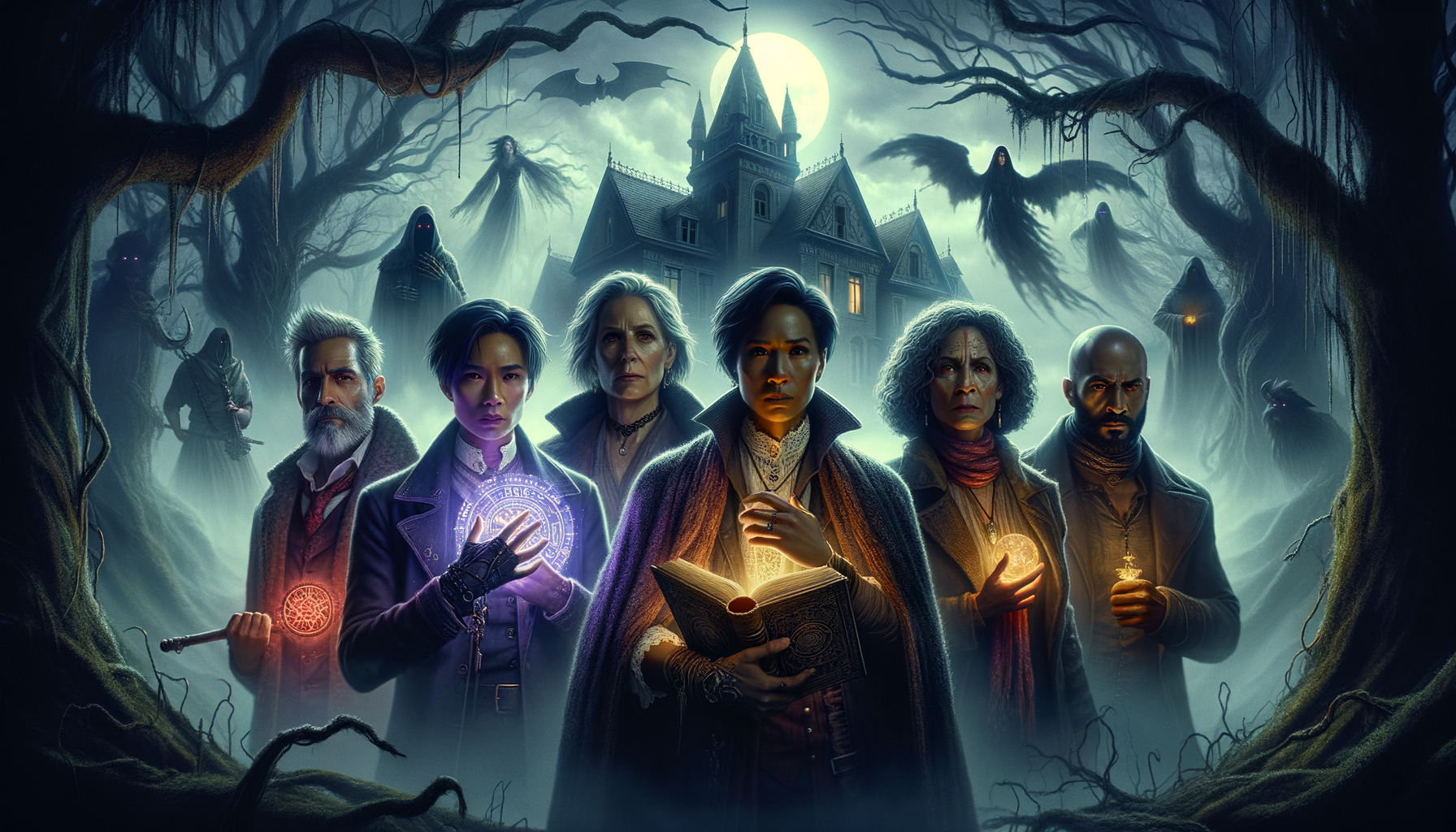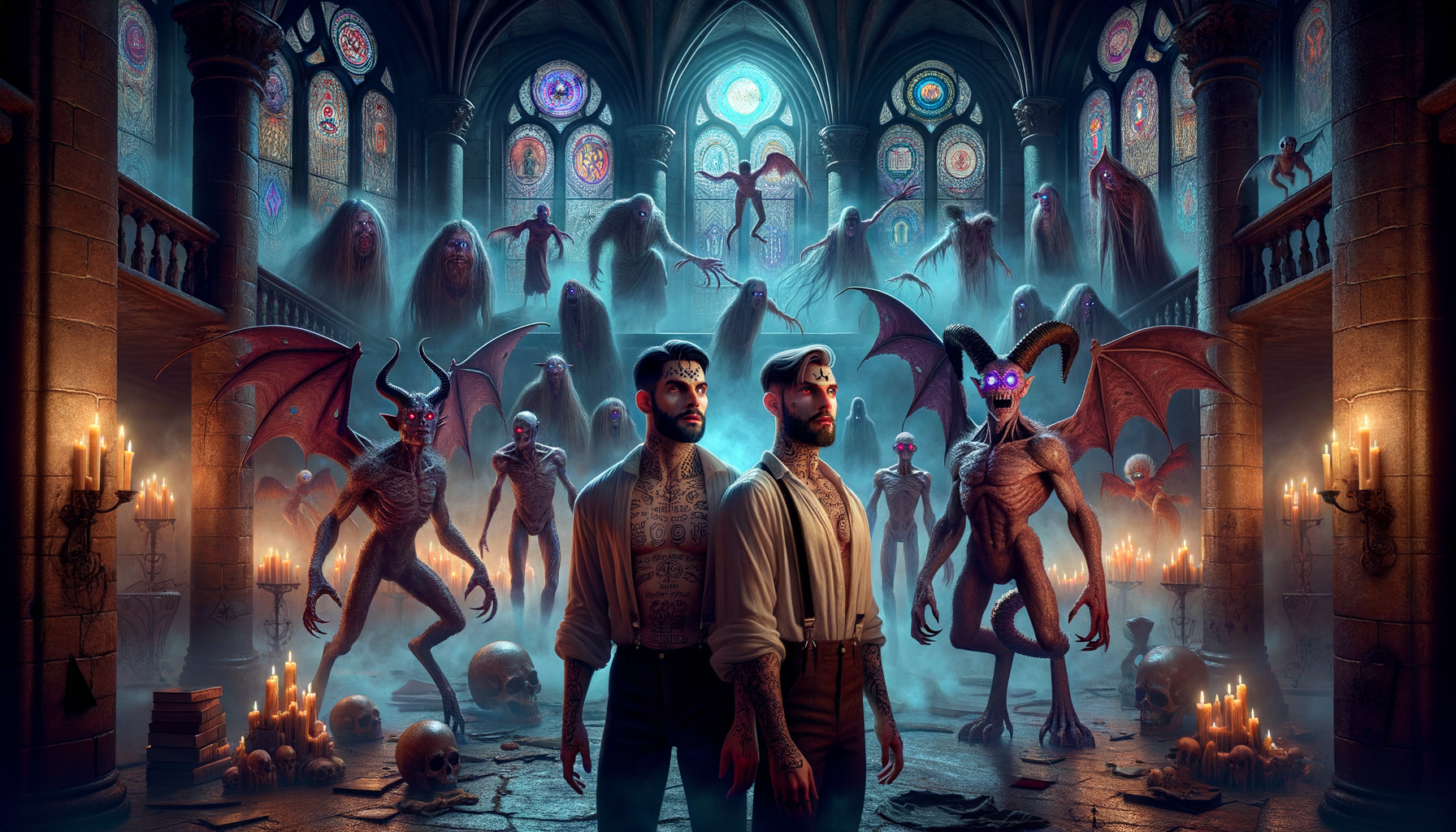![]()
Horror movies have always been a mirror to society’s darkest fears and most hidden desires. But did you know that LGBT iconography in horror has a rich, fascinating history? From coded characters to explicit representation, LGBT themes in horror provide subversive narratives that challenge norms and provoke thought. Imagine a film world where monsters symbolize the outcast and the feared ‘other,’ offering a chilling, yet exhilarating, experience for viewers. Ready to dive in? Let’s explore how LGBT iconography has shaped and been shaped by the horror genre through the years.
Historical Context of LGBT Themes in Horror
Early Horror and Coded Queer Characters
In the early days of horror cinema, LGBT themes were often present but not explicitly stated. Characters were frequently coded as queer, meaning their sexuality or gender identity was implied rather than overtly depicted. This subtlety was necessary due to societal norms and censorship laws that restricted explicit representation of LGBT individuals. For example, some early horror films featured characters whose behaviors and mannerisms hinted at queerness, allowing audiences to read between the lines.
The Role of the Hays Code and Its Impact on LGBT Representation
The Hays Code, implemented in Hollywood from the 1930s to the 1960s, played a significant role in shaping LGBT representation in horror films. This set of industry guidelines prohibited explicit depictions of homosexuality, leading filmmakers to rely on subtext and innuendo to convey queer themes. As a result, many horror films of this era featured characters and narratives that could be interpreted as LGBT without directly stating it.
Key Films from the Early 20th Century Featuring Implicit LGBT Themes
One notable example of early horror with implicit LGBT themes is “Dracula’s Daughter” (1936). The film subtly suggests a lesbian attraction between the titular character and her female victims, using vampirism as a metaphor for forbidden desire. Such films allowed for the exploration of queer themes within the constraints of the Hays Code, providing a space for LGBT audiences to see themselves reflected on screen, albeit in a veiled manner.
Social and Cultural Factors Influencing These Representations During Specific Eras
The representation of LGBT themes in horror films has always been influenced by the social and cultural context of the time. During the early 20th century, societal attitudes towards homosexuality were largely negative, leading to the marginalization and vilification of queer characters. However, these representations also offered a form of visibility and, in some cases, a critique of the repressive norms of the era.
The Rise of Explicit LGBT Representation in Horror
Shifts in the Late 20th Century Leading to More Open LGBT Themes
The late 20th century saw significant shifts in the representation of LGBT themes in horror films. As societal attitudes towards homosexuality began to change, filmmakers started to incorporate more explicit LGBT characters and narratives into their work. This period marked a transition from coded representations to more open and direct depictions of queer identities.
Notable Films and Filmmakers Pushing the Boundaries
One groundbreaking film that pushed the boundaries of LGBT representation in horror is “The Rocky Horror Picture Show” (1975). Directed by Jim Sharman, this cult classic embraced queer themes and celebrated sexual fluidity, challenging conventional norms and paving the way for future films. Other notable filmmakers, such as Clive Barker with “Hellraiser” (1987), also contributed to the growing visibility of LGBT characters in horror.
The Intersection of the Horror Genre and LGBT Activism
The rise of explicit LGBT representation in horror films coincided with increased activism within the LGBT community. Horror provided a unique platform for exploring themes of otherness, marginalization, and resistance, resonating with the experiences of many LGBT individuals. Filmmakers used the genre to address societal issues and advocate for greater acceptance and understanding.
How Explicit Representation Responded to Societal Changes and Demands
As societal demands for inclusivity and representation grew, horror films responded by incorporating more diverse and complex LGBT characters. This shift reflected broader changes in public attitudes and the growing recognition of LGBT rights. Explicit representation in horror became a way to challenge stereotypes, promote empathy, and celebrate the diversity of human experience.
Iconic LGBT Characters in Horror Films
Overview of Notable LGBT Characters in Horror
Over the years, horror films have introduced a number of iconic LGBT characters who have left a lasting impact on the genre. Characters like the Babadook from “The Babadook” (2014) and Frank-N-Furter from “The Rocky Horror Picture Show” have become cultural symbols, celebrated for their uniqueness and complexity.
Analysis of Their Roles and Significance Within Their Respective Films
These characters often play pivotal roles within their respective films, serving as both protagonists and antagonists. For instance, in “Hellraiser,” the character of Frank Cotton embodies themes of desire and transgression, challenging traditional notions of sexuality and morality. Similarly, the Babadook has been interpreted as a metaphor for repressed grief and identity, resonating with many LGBT viewers.
How These Characters Defy Stereotypes and Challenge Traditional Gender Roles
One of the most significant contributions of LGBT characters in horror is their ability to defy stereotypes and challenge traditional gender roles. Characters like Frank-N-Furter, with his flamboyant and unapologetic persona, subvert conventional expectations and celebrate the fluidity of gender and sexuality. These portrayals offer a refreshing departure from the often one-dimensional depictions of LGBT individuals in mainstream media.
Audience Reactions to LGBT Characters in Mainstream Horror
Audience reactions to LGBT characters in horror have been varied, reflecting broader societal attitudes towards queer representation. While some viewers have embraced these characters and praised their complexity, others have reacted with discomfort or hostility. Despite this, the inclusion of LGBT characters in mainstream horror has undoubtedly contributed to greater visibility and acceptance.
Themes and Symbolism in LGBT Horror Iconography
Common Themes Such as Otherness, Repression, and Transformation
LGBT horror films often explore themes of otherness, repression, and transformation. These themes resonate deeply with the experiences of many LGBT individuals, who have historically been marginalized and forced to hide their true selves. Horror provides a powerful medium for examining these issues, using the genre’s conventions to highlight the struggles and triumphs of queer identities.
Symbolism in Horror That Resonates with LGBT Experiences
Symbolism plays a crucial role in LGBT horror iconography. The monster, for example, is frequently used as a metaphor for the ‘other,’ representing the fear and fascination associated with difference. This symbolism allows horror films to delve into the complexities of identity, exploring the tensions between societal norms and individual expression.
How Horror Narratives Explore Identity and Self-Acceptance
Horror narratives often center on the journey of self-discovery and acceptance, themes that are particularly relevant to LGBT audiences. Films like “The Babadook” use supernatural elements to externalize internal conflicts, creating a space for characters (and viewers) to confront and embrace their true selves. This exploration of identity is a hallmark of LGBT horror, offering a cathartic experience for many.
The Psychological and Emotional Impact of These Themes on Audiences
The psychological and emotional impact of LGBT themes in horror can be profound. By addressing issues of otherness, repression, and transformation, these films provide a means for audiences to process their own experiences and emotions. This can be both challenging and liberating, offering a unique form of validation and empowerment.
Modern Trends in LGBT Horror Films
The Rise of Queer Horror Filmmakers and New Voices in the Genre
In recent years, there has been a notable rise in queer horror filmmakers who are bringing fresh perspectives and new voices to the genre. These filmmakers are not only telling stories that reflect their own experiences but are also pushing the boundaries of what horror can be. Their work is characterized by a blend of innovation, authenticity, and a deep understanding of the genre’s potential for social commentary.
Recent Films That Have Gained Critical Acclaim for Their LGBT Themes
Several recent films have gained critical acclaim for their exploration of LGBT themes. “Knife+Heart” (2018), directed by Yann Gonzalez, is a striking example of queer horror that combines eroticism, mystery, and a celebration of LGBT culture. Another notable film is “The Perfection” (2018), which tackles themes of trauma, revenge, and sexual identity in a gripping and unconventional narrative.
Streaming Platforms and Their Role in Diversifying Horror Content
Streaming platforms have played a crucial role in diversifying horror content and increasing the visibility of LGBT themes. Services like Netflix, Shudder, and Amazon Prime have provided a platform for independent filmmakers and niche genres, allowing a wider audience to access and appreciate queer horror. This shift has democratized the genre, making it more inclusive and representative of diverse voices.
Predictions for the Future of LGBT Iconography in Horror
Looking ahead, the future of LGBT iconography in horror appears promising. As societal attitudes continue to evolve and the demand for diverse representation grows, we can expect to see even more innovative and boundary-pushing films. The genre’s inherent flexibility and capacity for subversion make it an ideal space for exploring the complexities of LGBT experiences, ensuring that horror will remain a vital and dynamic platform for queer storytelling.
Conclusion
LGBT iconography in horror has evolved from hidden subtexts to powerful, explicit narratives that challenge societal norms and offer fresh perspectives. Its journey reflects broader cultural shifts and the increasing demand for diverse, inclusive storytelling. If you’re a fan of horror or simply curious about the ways it can mirror and critique society, exploring LGBT themes in horror will leave you both haunted and enlightened. Dive deeper into this thrilling genre and discover more about how it continues to redefine itself. Ready to face your fears? Start watching and reading more on this captivating subject!



